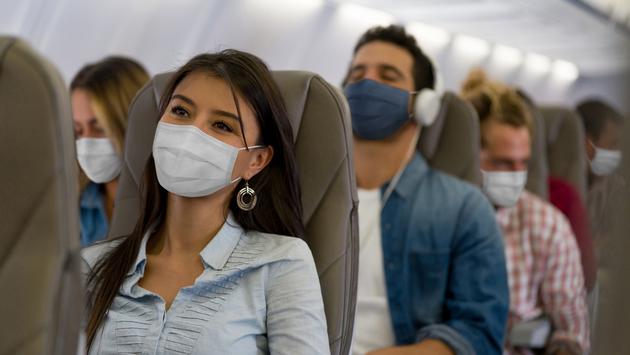Aviation Officials Find Low Risk for Coronavirus Transmission on Planes

According to research performed by The International Air Transport Association (IATA), the possibility of being infected with the coronavirus while on an airplane is extraordinarily low.
IATA, the umbrella group for most of the world’s airlines, found that since the start of 2020, only 44 cases of COVID-19 were thought to have been transmitted as the direct result of a flight journey. That includes confirmed, probable and potential cases.
The 44 cases represented an infinitesimal amount of the 1.2 billion passengers who have traveled over the first nine months of the year.
“The risk of a passenger contracting COVID-19 while onboard appears very low. With only 44 identified potential cases of flight-related transmission among 1.2 billion travelers, that’s one case for every 27 million travelers,” Dr. David Powell, IATA’s Medical Advisor, said in a statement. “ We recognize that this may be an underestimate but even if 90 percent of the cases were un-reported, it would be one case for every 2.7 million travelers. We think these figures are extremely reassuring. Furthermore, the vast majority of published cases occurred before the wearing of face coverings inflight became widespread.”
The findings were assisted by a joint publication by Airbus, Boeing and Embraer of separate computational fluid dynamics (CFD) research conducted by each manufacturer in their aircraft, in which they no longer found a need for plexiglass on airplanes.
While methodologies differed slightly, each detailed simulation confirmed that aircraft airflow systems do control the movement of particles in the cabin, limiting the spread of viruses. Data from the simulations yielded similar results.
IATA’s data collection, and the results of the separate simulations, align with the low numbers reported in a recently published peer-reviewed study by Freedman and Wilder-Smith in the Journal of Travel Medicine.
Although there is no way to establish an exact tally of possible flight-associated cases, IATA’s outreach to airlines and public health authorities combined with a thorough review of available literature has not yielded any indication that onboard transmission is in any way common or widespread. Further, the Freedman/Wilder-Smith study points to the efficacy of mask-wearing in further reducing risk.
